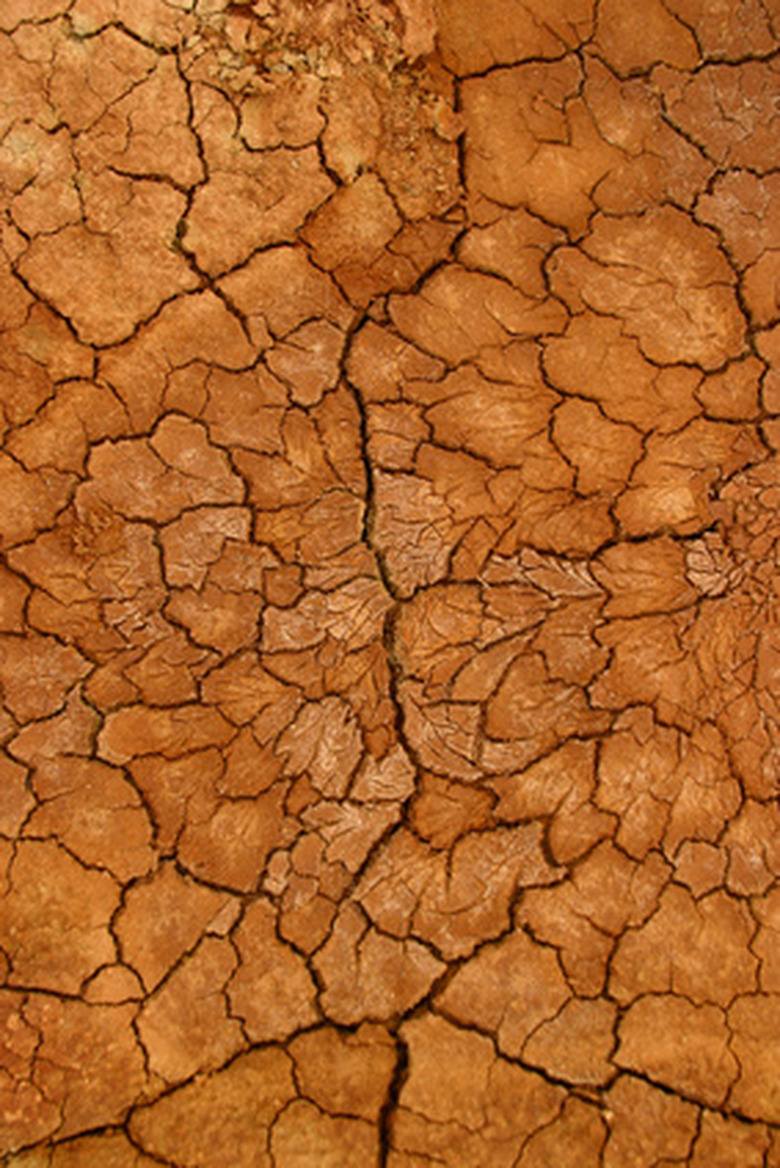The Application Of Gypsum To Clay Soil
Gypsum is a safe, nontoxic and inexpensive mineral that when added to compacted earth, in particular soils with high clay content, can loosen the ground and offers plants a chance to thrive. While used worldwide, the material is not without its critics who find the additive superfluous. While the product contains necessary elements for plant growth, it is not a fertilizer.
Description
Gypsum is known by several names include stain spar, hydrous calcium sulfate and seleite. Domestically the largest gypsum producing states are California, Nevada, Iowa and Texas. Gypsum can be found in products like chalk, plaster of Paris, Portland cement and even sheetrock. Agriculturally, it is best applied to the ground beneath plants in flake form and then worked into the soil. Gypsum also contains calcium and sulfur, which are necessary for root growth.
- Gypsum is a safe, nontoxic and inexpensive mineral that when added to compacted earth, in particular soils with high clay content, can loosen the ground and offers plants a chance to thrive.
Function
Gypsum penetrates clay particles and causes them to lump together. The creation of tiny clods of dirt granulates the clay removing the "sticky" nature of the soil. This clumping of soil allows oxygen to reach plant roots spurring additional growth. The loosened clay allows roots to grow aggressively seeking and reaching additional water sources.
Application
While the mineral is found in several forms, the flake form is considered best when applying to a lawn or garden. Gypsum flakes are less likely to blow away in the wind. Once distributed, a heavy watering breaks the gypsum down and leaches it into the clay soil. If applying directly to the soil, then a granular or powdered form works and can be manually or machine-tilled into the soil. Western Farm Press advocates the use of gypsum, noting the mineral benefits of the material, in particular the generous amounts of calcium and sulfur it contains. Both elements are necessary for plant growth.
- Gypsum penetrates clay particles and causes them to lump together.
- If applying directly to the soil, then a granular or powdered form works and can be manually or machine-tilled into the soil.
Controversy
The agriculture academic community has criticized gypsum use. The Louisiana State University Agriculture Center maintains that the majority of soils within the United States contain a mixture of non-native and native soils and are already loosed enough for plant growth. As for use on clay-laden soils, the results are considered temporary and will require intensive reapplication on a regular cycle. The purchase and use of gypsum can be expensive and time consuming. Be sure to analyze the intensity of the clay problem before choosing to use the mineral.
Safety
Gypsum is nontoxic and can be manipulated without gloves or other forms of protection. When used on a lawn it will not burn the grass. Safe for use around pets and children, use of gypsum does not change the "organic" status of a garden or lawn.
- The agriculture academic community has criticized gypsum use.
- Safe for use around pets and children, use of gypsum does not change the "organic" status of a garden or lawn.
